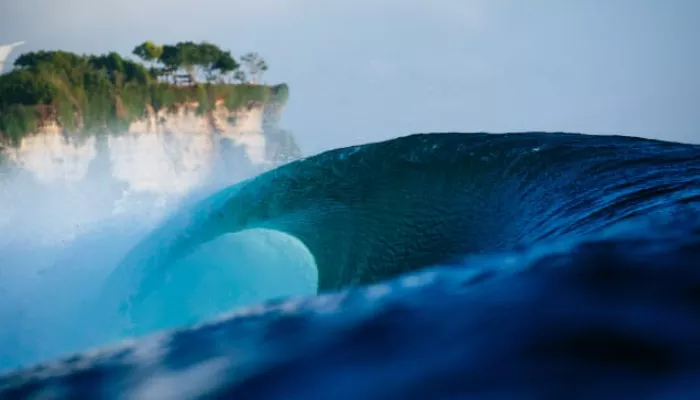BALI – Ongoing construction of a seawall designed to protect the Uluwatu Temple is exacerbating environmental damage, with new footage highlighting the severe effects of the rainy season. Bali’s wettest month, January, has brought heavy rainfall, compounding the consequences of the project, which began in August to safeguard the temple from erosion.
The newly released footage, recorded on December 28, 2024, by Piter Panjaitan, shows alarming scenes of cliff sediment cascading into the ocean, turning the Indian Ocean’s usual turquoise hues into murky browns and creams. The seawall, which has already been extended near the Secrets surf break, reveals the extent of both the construction and the ongoing erosion.
Surfer and environmental activist Kelly Slater responded to the footage with frustration, questioning why the local community is not rallying together to oppose the project. Panjaitan, who serves as Director of the BaliLife Foundation, explained that he had organized a meeting with government representatives, surfers, coastal experts, and community elders just days before the footage was taken. Despite their efforts, no significant progress was made, with Panjaitan describing the project as a “done deal.”
Panjaitan, a father of two, has been at the forefront of the local push to highlight the environmental risks of the construction. His activism has included documenting incidents such as workers dumping limestone directly into the ocean, a move he says highlights the lack of oversight and the absence of a public Environmental Impact Assessment (EIA) before work commenced. The project is supported by the Badung Regency Government, and with the recent re-election of key officials, the likelihood of halting or altering the plans remains slim.
Further aerial footage shared by @aryawiznu shows the rapid expansion of the seawall project, with the environmental consequences becoming more evident. Yet despite widespread awareness of the damage, stopping the project seems an increasingly difficult challenge. Panjaitan urges the public to continue sharing and exposing the issue, stressing that the fight is not just about preserving waves but protecting marine life and the surf culture that sustains the community.
Additional footage shared by @canggu.info reveals further erosion near the temple itself, with significant sections of the cliff face eroded away. This raises concerns about whether the seawall will even fulfill its intended purpose of safeguarding the temple, which has been a spiritual cornerstone for over a millennium.
A petition organized by the Save the Waves Foundation, now with 17,000 signatures, calls for increased awareness of the environmental risks posed by the project. With a goal of reaching 25,000 signatures, the petition seeks to draw attention to the potential damage to Uluwatu’s fragile marine ecosystem.
As the rainy season continues, sending more sediment into the sea, advocates like Panjaitan stress that maintaining visibility on the ongoing construction is critical. “We must keep this issue alive,” he said, as the battle to preserve one of surfing’s most iconic locations continues.
Related topics
- Hessmann to Join Movistar After Doping Suspension Ends
- Common Shark Species Found Near Popular Surf Spots
- Surf Community Unites in Massive Los Angeles Fire Relief Effort

